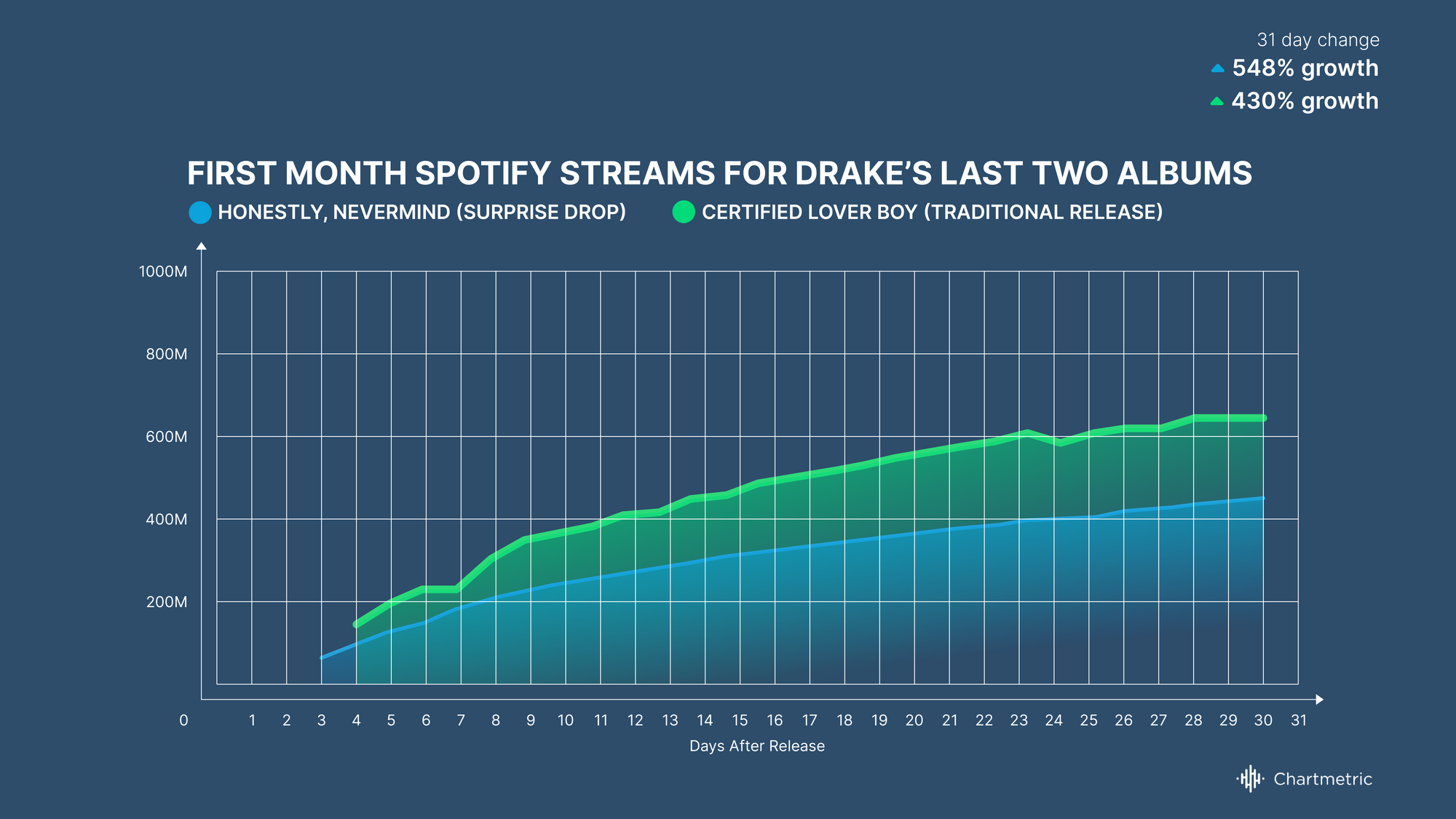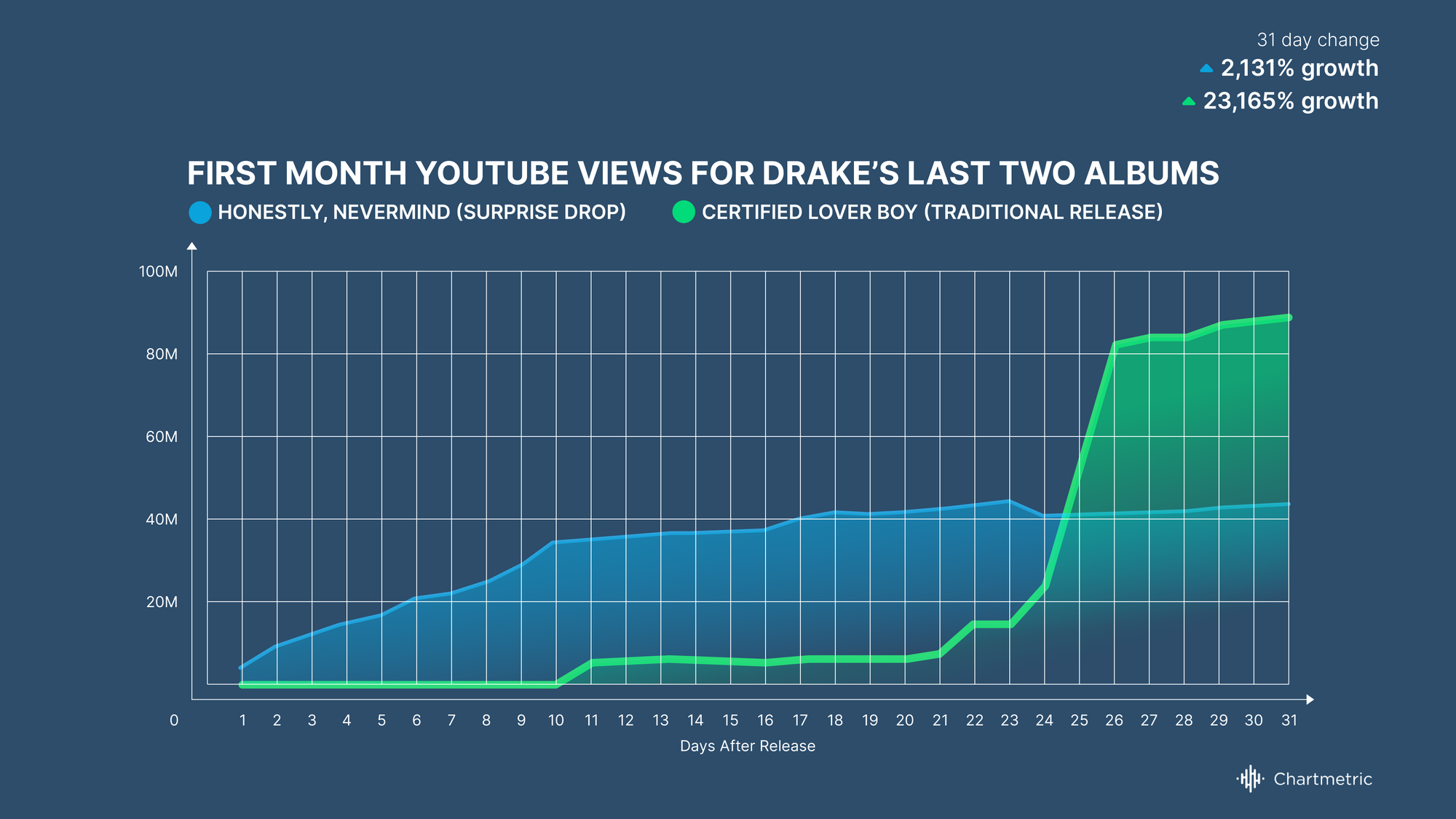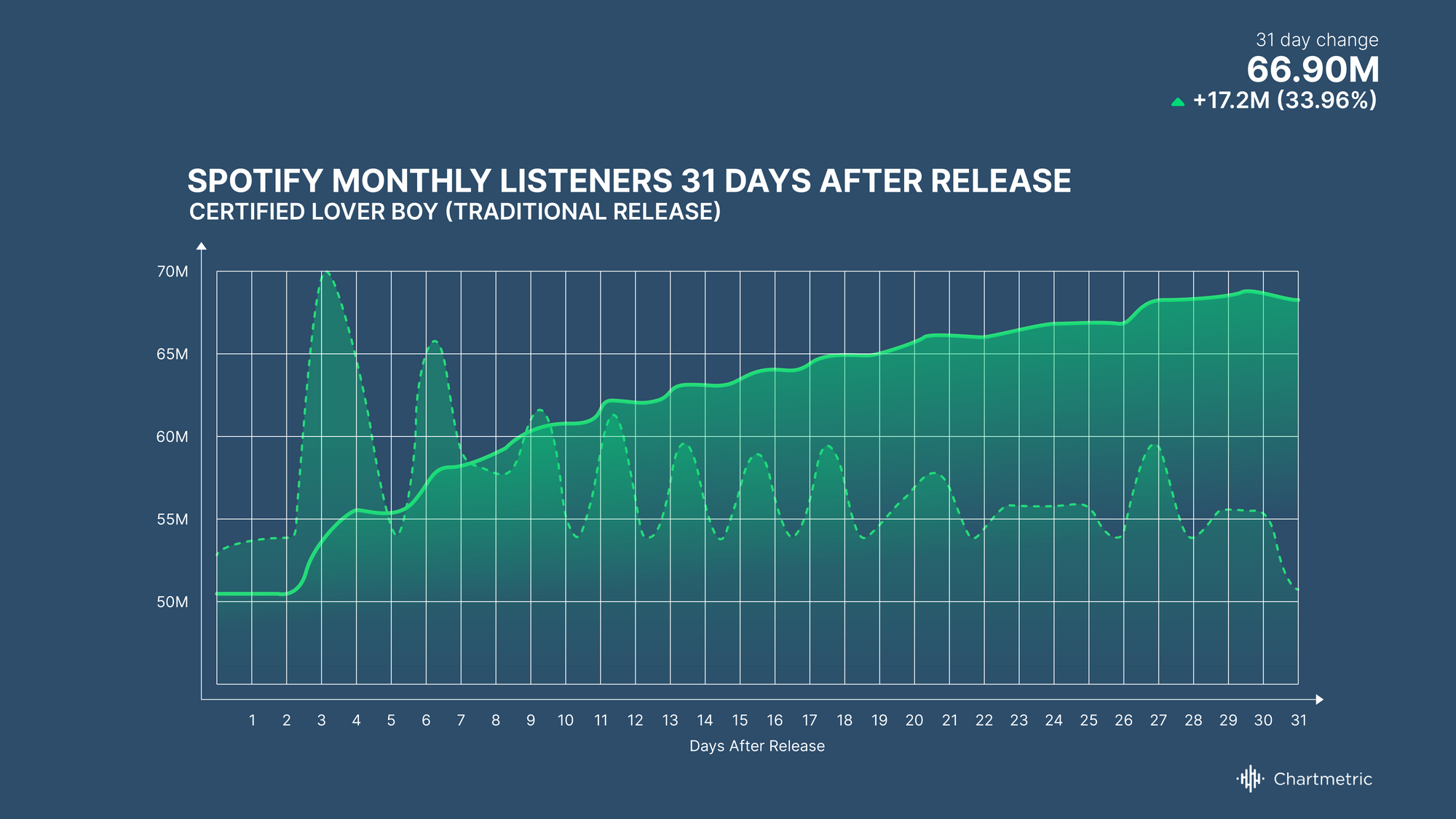Why Taylor Swift uses Drake’s release strategy
Drake’s surprise drop of “Honestly, Nevermind” is an album release strategy that’s been employed by other superstars like Taylor Swift. But does it work?
by Rutger Ansley Rosenborg of How Music Charts
In the attention economy, constant newness is the go-to strategy. When it comes to music, that means constantly dropping new music to keep the algorithm hungry for more. While this singles-driven approach is increasingly common for developing artists trying to make a name for themselves, bigger artists — especially superstars — still tend to focus on the album.
Traditionally, an album drop is preceded by a series of single releases, usually spaced out by about a month or two, which theoretically warms up the audience and generates anticipatory buzz for the record. Every so often, however, an artist will forgo a traditional album release in favor of a surprise drop, distributing the whole album across all platforms with little to no notice beforehand. Radiohead’s done it, Death Grips have done it, Nine Inch Nails have done it, Beyoncé perfected it, and Taylor Swift followed suit.
On June 17, 2022, Drake gave the surprise drop album release strategy a shot as well with Honestly, Nevermind. It was a departure from previous album releases of his, including his penultimate album, Certified Lover Boy, released Sept. 3, 2021. That made us curious as to whether Drake (or any artist, for that matter) benefitted from a surprise drop vs. a traditional album release strategy and what that might mean for other artists looking for the best album release strategy for their music.
Drake’s Album Consumption on Spotify and YouTube
Looking at the Spotify streaming growth for Honestly, Nevermind vs. Certified Lover Boy, it’s apparent that the former album had more overall streams in the first 31 days of release, in part because the singles released beforehand gave it a head start. However, Honestly, Nevermind saw more growth (548 percent vs. 430 percent) during this time period, indicating a bigger initial splash.
On YouTube, meanwhile, Certified Lover Boy started off below where Honestly, Nevermind started off and then exploded about three weeks after release. Ultimately, in the first 31 days of release, Certified Lover Boy saw 20x more growth than Honestly, Nevermind did, catapulting the former album’s YouTube views about 2x higher than the latter’s.


Looking at just the initial signals on these two platforms, it would seem that Drake’s traditional release was more effective than his recent surprise drop in terms of overall consumption on Spotify and YouTube within the first month or so of release. There are, of course, a lot of complicating variables at play here, so we can’t chalk all of this up to the album release strategy.
Drake’s Audience Engagement on Spotify and YouTube
Consumption at the track- and album-level is obviously important, but there’s also something to be said about how an album release affects artist-level stats as well. After all, it’s not all about just short-term revenue figures; it’s also about building the artist’s brand to ensure long-term staying power, and we can look to how audiences engage with an artist on various platforms to get a gauge of how well that brand building is happening.
For Drake, Certified Lover Boy meant almost 34 percent Spotify Monthly Listener growth and almost 4 percent YouTube Channel View growth for Drake’s artist profile. Honestly, Nevermind got him about half of that growth, meaning Drake’s surprise drop wasn’t nearly as effective, at least in the first month of release, as his traditional release was at engaging his audience on Spotify and YouTube.


By no means does the comparatively worse audience engagement for Honestly, Nevermind in the first month of release mean that Drake’s brand was hurt by the surprise drop. Instead, it suggests that in terms of engaging his audience and building up his brand power, maybe a traditional release goes further.
What Is the Best Album Release Strategy?
Now, it would be easy to say that because Drake saw more consumption and audience engagement growth from Certified Lover Boy, his last traditional album release, than he did from Honestly, Nevermind, his last surprise album drop, that the traditional album release strategy is more effective in general. But drawing that conclusion from one case study would be premature. The answer is much more nuanced than that.
Take some of Taylor Swift’s most recent releases, for instance (and she also knows a thing or two about building a brand, by the way). Most of Swift’s releases have followed the traditional album release strategy, but in recent years, she’s adopted the surprise drop as her go-to strategy. On Aug. 23, 2019, Swift released Lover on the heels of three single releases spaced out by two months each. Within the first 31 days of that album release, her Spotify Monthly Listeners jumped almost 32 percent, putting her at around 52.5M. About a year later, on July 24, 2020, Swift surprise dropped Folklore, sending her Spotify Monthly Listeners up almost 52 percent to about 51M. Cleverly, she struck while the iron was hot and surprise dropped another album, Evermore, just six months later, maintaining her momentum.
On Swift’s YouTube channel, Evermore helped her views grow 1.88 percent, amounting to 369.3M more views. Folklore, Swift’s preceding traditional release, netted her 302.1M views, amounting to 1.45 percent growth and suggesting that the surprise drop album release strategy was more beneficial for her audience engagement.


So, what is the best album release strategy: traditional release or surprise drop? Well, like most things in life, the answer is, “it depends.” For Drake, a traditional release seems to be more effective than a surprise drop. For Swift, the opposite appears to be the case. There could be dozens of reasons why this might be the case. Maybe Team Drizzy doesn’t go as hard as Swifties tend to. Maybe Drake appeals to a more generalized audience and Taylor Swift to a more targeted one, making the traditional cycle more effective for getting that generalized audience warmed up for the moment the album drops.
At the end of the day, it comes back to attention. For some artists, the traditional album release strategy is better at capturing their audience’s attention. For other artists, especially artists whose audience is already highly engaged, the surprise drop likely magnifies that attention. Figuring out what album release strategy is optimal for your artist (or yourself) starts with understanding the audience for the music. Then, you can start to strategize about how to focus attention on your campaign.
Soooo she did first but it’s his strategy somehow